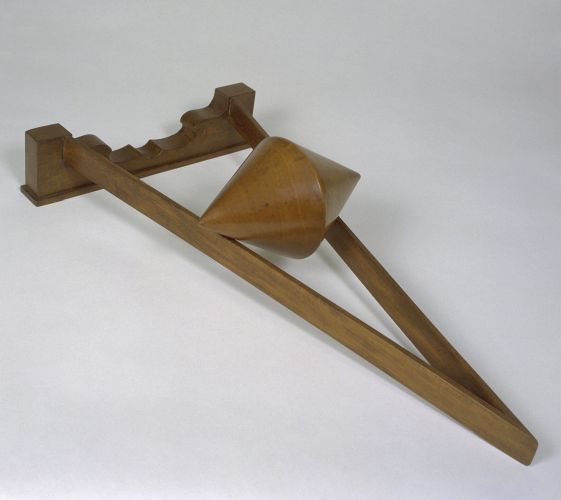Error
Mechanical paradox
Wooden instrument consisting of two diverging uphill rail tracks and a double cone. The geometry of the object is configured in such a way that, if the double cone is placed at the lower end of the tracks, it moves towards the higher one. If the double cone were really to rise, the potential energy gained at the end of the run could be transformed into useful work, for example operating a lever. Once the initial level is reached, the double cone could be moved horizontally to the starting point, expending a small fraction of the work gained. The cycle could be repeated, producing continuous work from nothing. Unfortunately, there is a visual deception in the object’s geometry. In the apparent ascent, the centre of gravity of the double cone drops inexorably. Once it has reached the end of its run, it cannot produce any work; on the contrary, force needs to be applied in order to bring it back to its starting point.
The instrument was already common in physics cabinets in the first half of the 18th century, described both by the Dutch mathematician Willem Jacob ’s Gravesande (1688-1742) in Physices elementa mathematica, esperimentis confirmata (Leiden 1720-1721) and by the French abbot Jean-Antoine Nollet (1700-1770) in Leçons de physique expérimentale (Paris 1743-1748).


